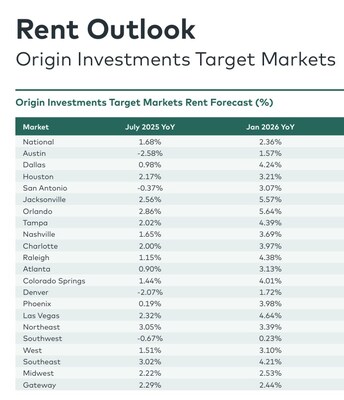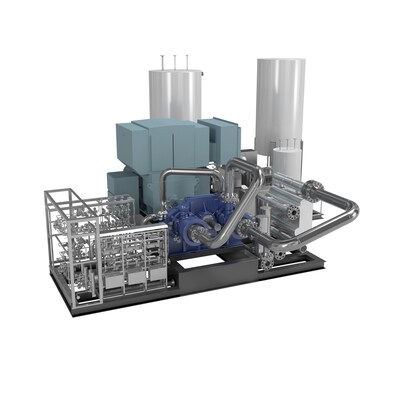After a Nearly 30% Sector Rally, Are There Any High-Yield Utility Stocks Left? (YES, and Here Are 3 of the Best!)
Utility stocks have surged this year. As measured by the Utilities Select Sector SPDR ETF, the average utility has gained nearly 30%. Add in dividends, and the total return is well over 30%.
As utility stock prices have risen, their dividend yields have declined. However, there are still some very attractive options out there if you know where to look. Black Hills (NYSE: BKH), Brookfield Infrastructure (NYSE: BIPC)(NYSE: BIP), and Brookfield Renewable (NYSE: BEPC)(NYSE: BEP) stand out to a few Fool.com contributors right now as three of the best higher-yielding options in the utility space. That makes them great options for those seeking to generate some dividend income.
The mighty little dividend utility
Reuben Gregg Brewer (Black Hills): The average utility, using Utilities Select Sector SPDR ETF as an industry proxy, has a dividend yield of about 2.9%. Black Hills is offering 4.25%. If you are looking for a high yield, you’ve found it right here. But that’s not the only thing to like about Black Hills’ dividend. The regulated natural gas and electric utility has also increased the dividend for 54 consecutive years. You don’t build a track record like that by accident, which is why there are so few Dividend Kings like Black Hills in the utility sector.
Don’t feel bad if you’ve never heard of Black Hills. It is a relatively small company. With a market capitalization of roughly $4 billion, it isn’t half the size of the smallest utility in the S&P 500 Index. But this is a net benefit for small investors who do know about Black Hills (which now includes you). While everyone else is focusing on industry giants, you can spend your time getting to know a high-yield utility that’s a “giant” when it comes to dividend consistency.
Backing the dividend at Black Hills is a customer base that’s growing roughly three times faster than the U.S. population. And while earnings growth is targeted to fall between just 4% and 6% a year, with the dividend likely to track that number, that’s more than enough to not only keep up with inflation but also grow the buying power of the dividend over time.
Sure, you’ll have to dig a little deeper if you want to track Black Hills. But the extra yield and dividend consistency will likely be well worth the effort.
A historically cheap valuation
Matt DiLallo (Brookfield Infrastructure): Brookfield Infrastructure has underperformed compared to other utility stocks this year. The corporate shares (BIPC) have rallied 17%, while the limited partnership units (BIP) have gained only 8%. Because of that (and the company’s strong growth), it trades at a very compelling valuation these days, especially compared to other utilities.
The company trades at 14.1 times its adjusted funds from operations (FFO). That’s below its historical average of 15.5 and its average over the past five years of 16.5. That low valuation is why Brookfield Infrastructure currently offers such an attractive yield (4.8% for BIP and 3.9% for BIPC), more appealing than the average utility, which yields around 3% these days.
Brookfield also offers better dividend growth potential (5%-9% annually compared to around 4% for other utilities). Meanwhile, it provides a greater degree of diversification (it operates utilities and other utility-like businesses in the transportation, energy, and data infrastructure sectors) with lower risk, given its low exposure to consumers.
The company also has strong overall growth potential. It expects to grow its FFO at a 10%-plus annual rate in the future. Its significant exposure to the digitalization megatrend (more than 60% of its FFO) is a big factor powering that view.
Brookfield’s utilities and gas infrastructure assets should benefit from surging power demand. Meanwhile, its utility-like data infrastructure platforms (semiconductor manufacturing, data centers, towers, and fiber) will benefit from the expected growth in computing power and data demand from megatrends like artificial intelligence (AI).
This is one of the more compelling investment opportunities in the utility space these days. The company offers high growth potential and a high-yielding dividend at a historically low valuation. Because of that, it could produce powerful total returns in the coming years, making it a great stock to buy right now.
Renewable-powered growth
Neha Chamaria (Brookfield Renewable): Climate change adds to energy security risk, one of the biggest reasons why nations across the globe are adopting clean energy. Renewable energy sources, like wind, solar, and water, are readily available and aplenty with little or no greenhouse gas emissions.
Therefore, companies generating electricity from renewable energy sources have strong growth potential. One such company is Brookfield Infrastructure’s renewables-focused sibling, Brookfield Renewable. The company yields 5.3% for units of the partnership and 4.5% for its corporate shares.
Brookfield Renewable has a massive portfolio of hydro, wind, and solar assets and huge utility-scale solar and wind development platforms with a presence in more than 20 countries. As is typical for most utilities, Brookfield sold a major chunk, nearly 90%, of the renewable power it generated under long-term, fixed-price contracts with an average contractual life of 13 years last year.
The company acquires renewable assets, operates them commercially with a focus on cash flow and dividend growth, and periodically divests some assets to fund growth. It plans to invest $8 billion to $9 billion over the next five years into growth opportunities, aiming to grow its annual FFO by more than 10%. Importantly, Brookfield is also targeting annual dividend growth of 5% to 9% during the period.
With Brookfield Renewable on track to deliver a record year but the stock barely gaining 2% so far this year, it looks like one of few dividend stocks you could even double up on now. Since its cash flows back dividends, investors can expect bigger dividends year after year, which should further boost their total returns from the stock over time.
Should you invest $1,000 in Brookfield Renewable Partners right now?
Before you buy stock in Brookfield Renewable Partners, consider this:
The Motley Fool Stock Advisor analyst team just identified what they believe are the 10 best stocks for investors to buy now… and Brookfield Renewable Partners wasn’t one of them. The 10 stocks that made the cut could produce monster returns in the coming years.
Consider when Nvidia made this list on April 15, 2005… if you invested $1,000 at the time of our recommendation, you’d have $765,523!*
Stock Advisor provides investors with an easy-to-follow blueprint for success, including guidance on building a portfolio, regular updates from analysts, and two new stock picks each month. The Stock Advisor service has more than quadrupled the return of S&P 500 since 2002*.
*Stock Advisor returns as of September 30, 2024
Matt DiLallo has positions in Brookfield Infrastructure Corporation, Brookfield Infrastructure Partners, Brookfield Renewable, and Brookfield Renewable Partners. Neha Chamaria has no position in any of the stocks mentioned. Reuben Gregg Brewer has positions in Black Hills. The Motley Fool has positions in and recommends Brookfield Renewable. The Motley Fool recommends Brookfield Infrastructure Partners and Brookfield Renewable Partners. The Motley Fool has a disclosure policy.
After a Nearly 30% Sector Rally, Are There Any High-Yield Utility Stocks Left? (YES, and Here Are 3 of the Best!) was originally published by The Motley Fool





Leave a Reply